Strategy January 12, 2024
6 Intriguing Gadgets From CES 2024
The massive trade show attracted around 130,000 to Las Vegas to try out the latest advancements in technology.
CES, the tech trade show that wrapped on Friday, Jan. 12, brought more than 4,000 exhibitors – and around 130,000 attendees – to Las Vegas to showcase and sample the technology of tomorrow.
“I am excited by the breadth of innovation I’m seeing from companies large and small going into CES 2024,” said Gary Shapiro, president and CEO of the Consumer Technology Association (CTA), the organization that produces CES.
Among the major trends at this year’s show was, unsurprisingly, artificial intelligence. As the CTA noted: “Over 230 million smartphones and PCs shipping to the U.S. this year will tap the powers of generative AI through mobile apps, browsers and on-device software.” AI is also being used for everything from fitness-tracking apps on smartphones to “smart” pillows and mattresses that use the tech to help reduce snoring and improve sleep. One company was even displaying an app that uses AI to “translate” baby cries to tell harried parents whether their newborn is hungry, sleepy or in need of a diaper change.
Here are a handful of interesting products announced at CES this year.
1. This 3M Headset Charges Itself
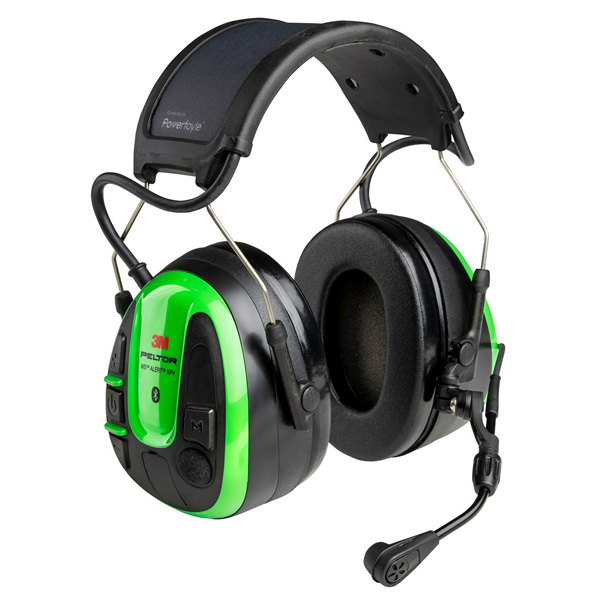
The self-charging protective headset from 3M uses solar cell technology to power itself.
3M, parent company of Top 40 supplier 3M/Promotional Markets (asi/91240), unveiled what it says is the world’s first self-charging protective communications headset. The headset uses a patented solar cell technology called Powerfoyle to convert indoor and outdoor light into clean electrical energy – recharging the built-in lithium-ion battery in the headset.
“This technology is a real game-changer,” said Peter Berghamn, business director of 3M’s PELTOR brand. “3M is relentlessly focused on inventing for tomorrow, and the advanced engineering and materials science woven into these headsets has created a perfect blend of performance, design, protection and sustainability.”
3M partnered with Swedish tech company Exeger to optimize the Powerfoyle solar cells using 3M’s own film technology. “The environmental benefits of replacing single-use batteries alone will have a significant positive impact for the industry,” said Giovanni Fili, CEO and founder of Exeger.
Other features of the solar-powered headset include a noise-canceling microphone and a push-to-listen feature that allows the wearer to hear their surroundings without removing the headset by pausing Bluetooth streaming. The headsets are partly produced with recycled plastics, and are expected to be available for purchase in March.
2. Birdwatching in the AI Age
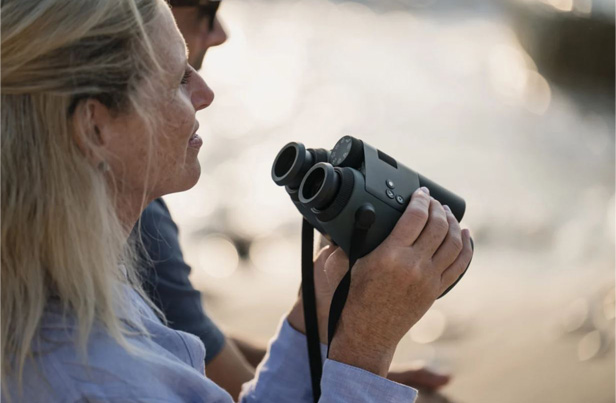
These AI-powered binoculars can identify over 9,000 species of birds and wildlife.
AI is making birdwatching a breeze: Swarovski Optik AX Visio binoculars can identify more than 9,000 species of birds and wildlife at the touch of a button. The binoculars also take pictures and video that can be transferred wirelessly to a companion app on a smartphone. The built-in GPS helps the onboard processor identify species based on location.
Also of note is a feature that allows users to indicate a discovery in the viewfinder with popup arrow markers, so it’s easier to pass the binoculars along and share a sight with a friend.
“The AX Visio’s added value for users consists of a real viewing experience that is enhanced with digital input,” said Andreas Gerk, chief technology and operations officer at Swarovski Optik.
The binoculars, with a hefty $4,799 price tag, will be available to buy in February.
3. Mirror, Mirror on the Wall …
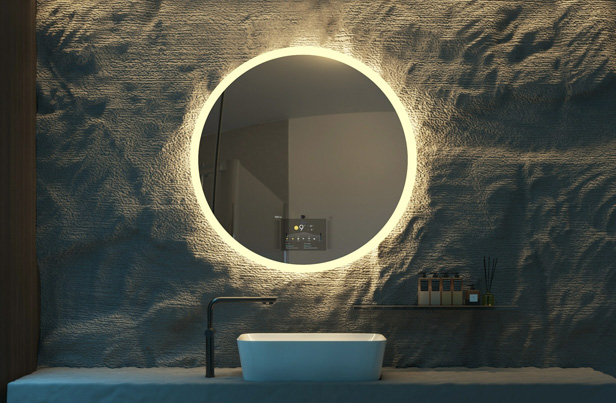
The BMind smart mirror will provide guided meditation and self-affirmations to help gazers improve their mood.
Health-tech company Baracoda unveiled an AI-powered smart mirror intended to help support mental wellness. The BMind is meant to act as a health companion that can identify a user’s mood and help manage stress.
From its CareOS operating platform, the mirror provides personalized recommendations and experiences based on a user’s mental state, as part of a seamless, touchless experience with gesture recognition, voice command and intent detection, according to Baracoda. BMind is powered by generative AI for conversation and coaching experiences, as well as natural language processing (NLP) for sentiment analysis. The smart mirror identifies and adapts to a user’s mood by providing light-therapy sessions and personalized, auto-generated mindfulness exercises such as guided meditation and self-affirmations.
“Technology that can monitor for subtle changes in health has the potential of improving the quality of millions of lives,” said Thomas Serval, CEO of Baracoda. “Our mental state exerts a strong effect on our sense of physical well-being. Including mood in our daily wellness check-ins creates a fuller picture that represents a powerful step toward redefining preventative health.”
4. A Smart Ring for Athletes
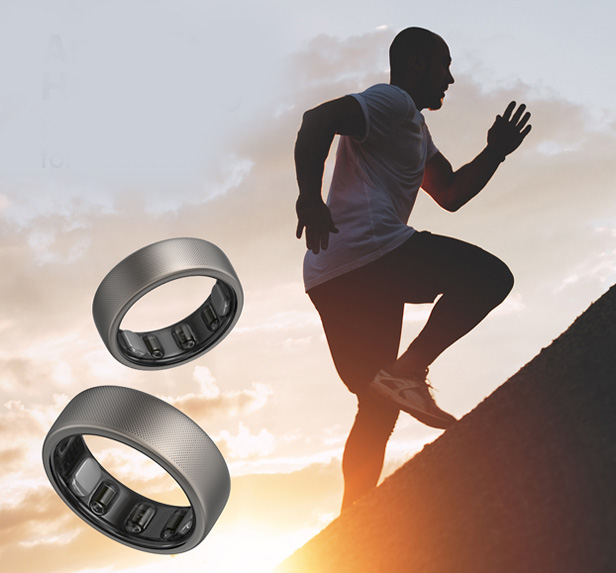
The Amazfit Helio Ring is smart jewelry designed for athletes.
The Amazfit Helio Ring from Zepp Health Corp. is a smart ring designed to provide athletes with recovery support. In the past, Zepp notes, most smart rings were designed as sleep trackers for general lifestyle users. The difference with the Amazfit Helio Ring is its ability to accurately monitor comprehensive data related to the wearer’s mental and physical condition.
The companion Zepp App makes the tracked data actionable by converting it into an intuitive daily “readiness” score designed to help athletes easily determine whether they should focus their day on activity or recovery.
“We are dedicated to pushing the boundaries of innovation and empowering individuals to take charge of their well-being through our advanced smart wearables,” said Wayne Huang, CEO of Zepp Health.
The smart ring is expected to be available in early spring.
5. An Oven You Can Wear
This wearable oven Will Cook (pun intended) food for you.
— Mukul Sharma (@stufflistings) January 12, 2024
Meet the WILLTEX WILLCOOK, the world's first wearable microwave bag, a self-heating and cooling bag, which heats and cools your food on the go.#WillCook #CES2024 #CES24 pic.twitter.com/Um7PnpwfGv
The Willcook is a wearable oven: essentially a backpack that uses an “embedded heat ray” to slow-cook food. The thought behind the somewhat head-scratching tech is that users could cook dinner during their daily commute or while out in the wild on a camping trip.
The bag reaches 90 degrees Celsius in 10 minutes and 130 degrees Celsius in 20 minutes after being powered on. It uses no fire and emits no carbon dioxide, according to Willtex, the smart-textile company that created it.
The Willcook will be available in the U.S. in September for roughly $200.
6. A Phone Charger That Moves With You
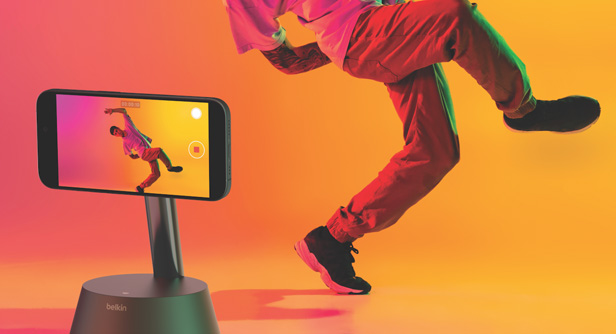
This wireless charging dock from Belkin automatically tracks movement to aid in content creation.
Belkin launched a new wireless charging dock for iPhones that can swivel and tilt to track a person’s movements. The Auto-Tracking Stand Pro provides automatic, silent, motorized camerawork using the iPhone’s built-in camera, to follow subjects on camera as they move around a space. It has 360 degrees of pan and 90 degrees of tilt, according to Belkin. The gadget would work well for immersive video calls or for recording interactive content that involves a high degree of movement.
“The Stand Pro is unlike any other Belkin product we’ve created,” said Melody Tecson, vice president of product management at Belkin. “We’re excited to provide content creators with a thoughtfully designed product that will effortlessly enhance the creation process.”
The Stand Pro is made with a minimum of 75% post-consumer recycled materials and sold in plastic-free packaging, according to Belkin.
